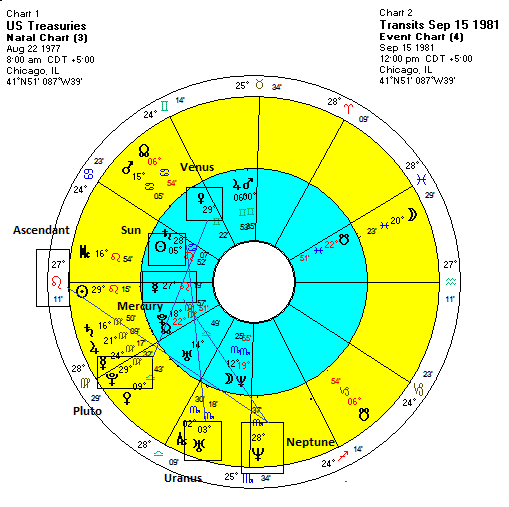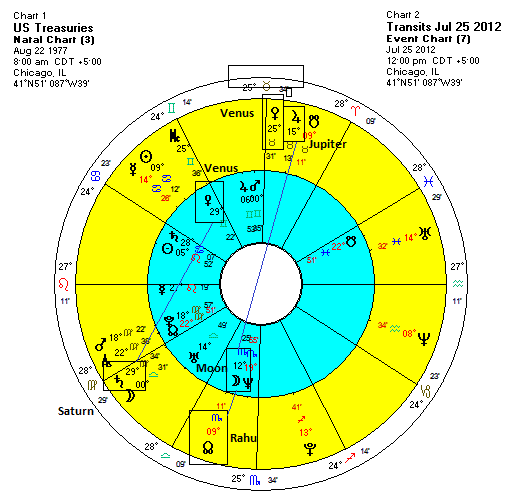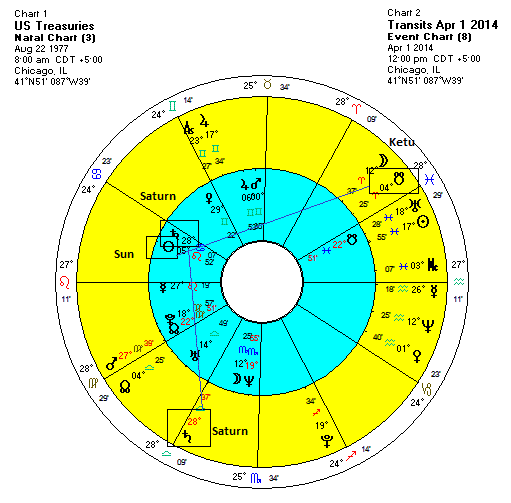 (23 December 2012) After the failure of John Boehner’s Plan B to make it to the floor of the House, the market is starting to wonder where all of this may be heading. With no solution in sight, investors are contemplating their options. Stock prices remain relatively firm at the moment, but if no deal is done by the December 31 deadline, markets are more likely to react negatively. President Obama has suggested the possibility of a temporary solution which essentially delays the tough spending decisions for one year in order to find an agreement with the increasingly fragmented GOP. While markets might give a quick stamp of approval to such a band-aid solution, it remains to be seen what the longer term implications would be. America’s debt load would still be unsustainable as the government would continue to spend a lot more than it takes in. This would open the door to another credit downgrade by a ratings agency. The S&P downgrade in August 2011 caused significant dislocation in financial markets and another downgrade would likely have a similar effect.
(23 December 2012) After the failure of John Boehner’s Plan B to make it to the floor of the House, the market is starting to wonder where all of this may be heading. With no solution in sight, investors are contemplating their options. Stock prices remain relatively firm at the moment, but if no deal is done by the December 31 deadline, markets are more likely to react negatively. President Obama has suggested the possibility of a temporary solution which essentially delays the tough spending decisions for one year in order to find an agreement with the increasingly fragmented GOP. While markets might give a quick stamp of approval to such a band-aid solution, it remains to be seen what the longer term implications would be. America’s debt load would still be unsustainable as the government would continue to spend a lot more than it takes in. This would open the door to another credit downgrade by a ratings agency. The S&P downgrade in August 2011 caused significant dislocation in financial markets and another downgrade would likely have a similar effect.
The US credit rating reflects the desirability of US debt as an investment instrument. The debt market often reflects debt ratings although one can often see some variance for a period of time. For example, the yield for 10-year US treasuries did not move significantly after the S&P downgrade. In the current climate of the Fed buying back huge amounts of US debt, the market assumed that rates would continue to stay low as the "buyer of last resort" would step in no matter what. If a country is seen as too much of a credit risk (e.g. Greece), its interest rates are forced to rise to offer investors some compensation to cover the risk of bankruptcy and default. Thus far, the US has managed to avoid the spectre of the "bond vigilantes" that have forced the EU to radically reshape their banking industry. But with its massive debt and seeming inability to come to a political solution to the fiscal cliff, one wonders how long it will be before investors begin to demand a risk premium for buying US Treasuries?
Astrology offers a unique perspective on the US debt situation. Using the horoscope of the first trade of US Treasuries on the Chicago Mercantile Exchange in 1977, we can get a glimpse into the various planetary correspondences that shape market sentiment on US debt. To get a better sense of how this has worked historically, we can look at the planetary picture at the time when US Treasuries had their all-time high yield. This occurred in September 1981 during a highly inflationary period when yields on the 10-year went above 15%. The Fed rate at that time had spiked above 20% as Fed Chair Paul Volcker employed whatever means necessary to bring down inflation. At a time when investors demanded a very high risk premium on Treasuries, we would expect the horoscope to be heavily afflicted.

As the chart above shows, it clearly was quite afflicted as seen in the high number of square 90 degree aspects involving slow moving outer planets. Perhaps the worst influence here is the presence of transiting Neptune right on the 4th house cusp, thus squaring the ascendant. This is one of the worst places for Neptune as it generates a lot of weakness. This Neptune influence was worsened by the fact that the natal chart has Mercury on the ascendant, hence Neptune was also square Mercury. It is a very dissolutive sort of influence that is rarely associated with positive outcomes. Interestingly, Neptune formed lesser aspects to Mars, Venus and Saturn which occupied similar degrees in their respective signs.
Next, we can see that transiting Uranus was closely squaring the Sun. Square aspects are usually negative regardless of the planet involved and the outer planets such as Neptune and Uranus are that much more likely to be bearish when they form a square aspect with an important point like the Sun or Ascendant. Uranus-Sun aspects can describe surprising or unstable situations where progress is unlikely. The debt market had become very volatile at this time and this Uranus-Sun aspect reflects its precariousness.
Transiting Pluto was also very much in the spotlight at this time as it squared Venus in the 11th house. The 11th house represents gains and income and this square aspect from Pluto was likely acting as a block on income from treasuries. It also formed aspects to the ascendant, Mars and Saturn, much in the same way that Neptune did.

Now compare that transit set up with the transits at the time of the all-time low in Treasury yields on July 25, 2012 when the 10-year hit 1.43%. We can see that Jupiter and Rahu both aspected the Moon. Rahu should be considered a positive influence since it occupies the 2nd house symbolizing wealth and assets in the natal chart. Transiting Jupiter also aspects the 2nd house so that is likely another positive influence. Uranus was in a favorable 120-degree trine aspect to the Moon and this was yet another favourable influence. To be sure, the picture is not an unblemished one. Saturn forms an exact square with Venus at the time of the all-time low in yields and therefore also forms lesser aspects with Mars and Mercury. This is usually a negative influence which is not easily explained. However, a certain amount of ambiguity is not unusual in a chart, especially when we are only using one analytical technique (i.e. transits) in order to keep things simple. As a noteworthy timing aspect, transiting Venus was exactly at the top of this chart on the 10th house cusp, reflecting the positive sentiment surrounding Treasuries.
So what does the future hold for the US debt market? Will Treasuries suffer the final "blow-up" that many have been predicting ever since the Financial Meltdown of 2008 as the Fed’s money printing finally comes back to haunt it? How long can rates stay low before the market demands a greater risk premium to offset the risk of a US default? The planets suggest that any blow-up is still quite a ways off. Transiting Jupiter will continue to aspect the Moon for the first half of 2013 so that may create a kind of buffer around yields to keep them relatively low. And since there are no significant aspects involving powerful outer planets either, I would tend to think that 2013 may see yields — and hence US interest rates — remain relatively low. They could move up somewhat but it seems unlikely that they will spike sharply higher.

A more troublesome aspect looks like it will be the Saturn square to its natal position in the early spring of 2014. The absence of any other major aspects suggests this may only be a gradual move higher and will not represent some major financial crisis. Nonetheless, it looks like a larger rise than anything we have seen recently. One possibility is that early 2014 will see a technical breakout above the falling channel that treasury yields have been carving out over the past 20 years. It may take another several years before the US approaches anything like a bond vigilante situation that we saw in Europe recently. Neptune’s opposition to the Ascendant and Mercury occurs in 2020 so that would be one possible candidate for a 1981-like inflation and yield spike.
Meanwhile, markets were mixed last week as problems surrounding the fiscal cliff talks undermined confidence. US stocks closed modestly higher on the week despite some late week nervousness with the Dow ending the week at 13,190. Indian stocks slipped a bit as the Sensex fell to 19,242. As expected, we did see some bearishness around the midweek Mars-Ketu aspect and the early week was more positive on the Mercury-Jupiter aspect. Gold continued to slide as expected as the Sun comes under the increasing influence of bearish Saturn.
This week may see thin holiday trading but I would think that a bearish mood is more likely later in the week. Mercury lines up with Rahu for Thursday and Friday while Mars is in aspect with Neptune. By Friday, the Sun will be just two degrees short of its conjunction with Pluto and an exact aspect from Saturn. This is not to say that markets can’t rise in this kind of planetary environment. But it looks more conducive to confusion, caution, and risk-avoidance.

Transits for Friday December 28, 2012
These forecasts are posted every weekend, usually by Sunday 1200 GMT.
investor newsletter which can be subscribed to here.
Please read my Disclaimer
Market forecast for week of 17 December 2012
Market forecast for week of 10 December 2012
Market forecast for week of 3 December 2012
Market forecast for week of 26 November 2012
Market forecast for week of 19 November 2012
Market forecast for week of 12 November 2012
Market forecast for week of 5 November 2012
Market Forecast for week of 29 October 2012
Market Forecast for week of 22 October 2012
Market Forecast for week of 15 October 2012
Market Forecast for week of 8 October 2012
Market Forecast for week of 1 October 2012
Market Forecast for week of 24 September 2012
Market Forecast for week of 17 September 2012
Market Forecast for week of 10 September 2012
Market Forecast for week of 3 September 2012
Market Forecast for week of 27 August 2012
Market Forecast for week of 20 August 2012
Market Forecast for week of 13 August 2012
Market Forecast for week of 6 August 2012
Market Forecast for week of 30 July 2012
Market Forecast for week of 23 July 2012
Market Forecast for week of 16 July 2012
Market Forecast for week of 9 July 2012
Market Forecast for week of 2 July 2012
Market Forecast for week of 25 June 2012
Market Forecast for week of 18 June 2012
Market Forecast for week of 11 June 2012
Market Forecast for week of 4 June 2012
Market Forecast for week of 28 May 2012
Market Forecast for week of 21 May 2012
Market Forecast for week of 14 May 2012
Market Forecast for week of 7 May 2012
Market Forecast for week of 30 April 2012
Market Forecast for week of 23 April 2012
Market Forecast for week of 16 April 2012
Market Forecast for week of 9 April 2012
Market Forecast for week of April 2 2012
Market Forecast for week of March 26 2012
Market Forecast for week of March 19 2012
Market Forecast for week of March 12 2012
Market Forecast for week of March 5 2012
Market forecast for week of February 27 2012
Market forecast for week of February 20 2012
Market forecast for week of February 13 2012
Market forecast for week of February 6 2012
Market forecast for week of January 30 2012
Market forecast for week of January 23 2012


